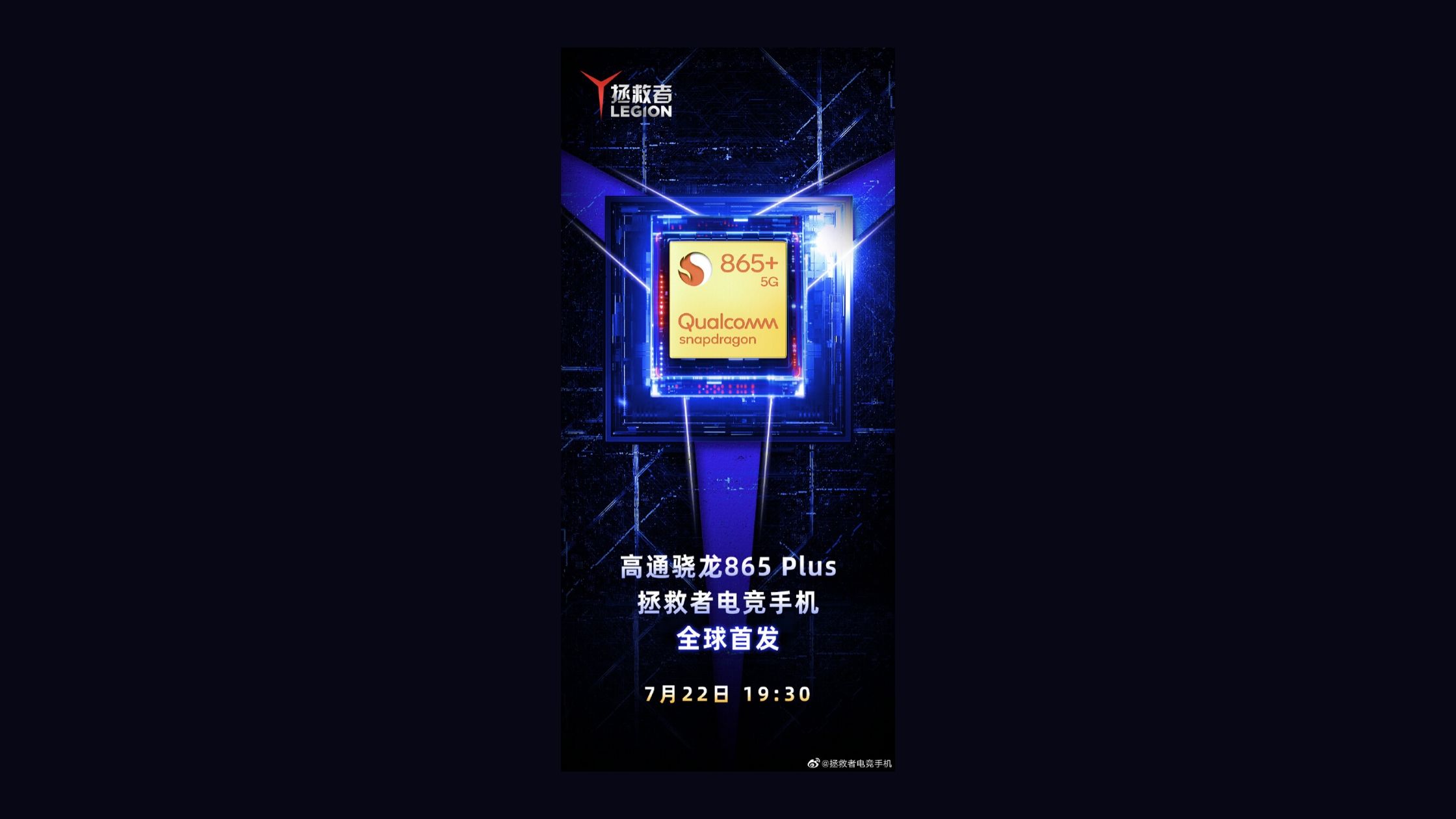Lenovo will unveil a high-end gaming phone on July 22
Lenovo is about to return to the high-end smartphone space with a gaming flagship of its own. Supposedly called the Legion gaming phone, we now have a launch date for its unveiling.
The Lenovo Legion gaming phone will be unveiled on July 22 in China. One of the key features of the device will be the chipset. It will be powered by the Snapdragon 865 Plus chipset, making it one of the first devices to feature the chipset right along with the Asus ROG Phone 3, which is also launching on the same day.
- Snapdragon 865 Plus - everything you need to know
- Upcoming smartphones in India: Specs, launch date, price
Snapdragon 865 Plus

The Snapdragon 865 Plus is the enhanced version of the already existing 865 chipsets. And, of course, you get the 5G connectivity. The prime core is clocked at 3.09GHz, three gold cores at 2.42GHz, and four silver cores clocking at 1.8GHz. It is coupled with Adreno 650 GPU. It boats faster CPU, GPU, and Wi-Fi speeds compared to the vanilla 865. It houses the same 5G modem as we’ve seen on the Snapdragon 865 chipset. You get support Bluetooth 5.2 here.
Lenovo Legion gaming phone expected specs
Apart from the new chipset, the device is expected to come with 16GB LPDDR5 RAM and 512GB UFS 3.1 storage configurations. If this holds true, the device will be one of the first to come out with whopping 16GB of RAM. It will come with a 2,340×1,080 full HD+ resolution screen with a 144Hz refresh rate featuring an OLED screen.
Other features expected include a 45W fast charging speed, a 64MP quad rear camera, and an in-display fingerprint scanner. Previous leaks suggest that the device will house an unusual side pop-up camera that pops up from the right side of the device’s frame instead of the top. Apart from this, it is expected to come with dual front-firing speakers, cooling tower and dual heat pipes to keep the temperature under the check.
Most of the things rumoured to date sound cool on paper, it’ll all depend on how it works in real life and Lenovo’s implementation.


No comments